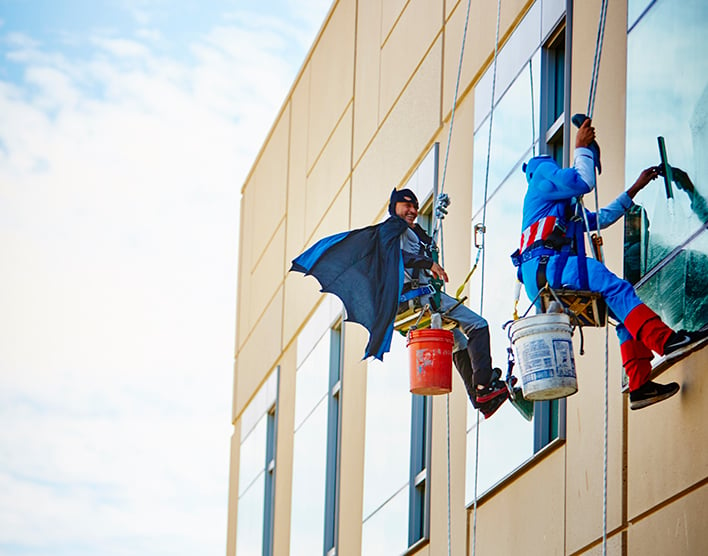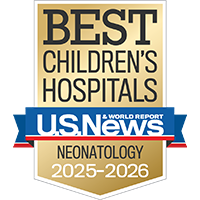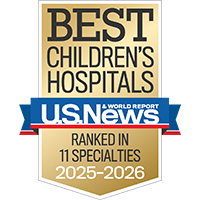Staff superheroes
It’s a bird. It’s a plane. It’s a window washer! Dressed as a superhero to clean and brighten your day.


A congenital pulmonary (cystic) airway malformation (CPAM) is a benign (noncancerous) mass of abnormal lung tissue that is usually located in one lobe (section) of the lung. Babies born with a CPAM may have respiratory distress at birth or may not have any symptoms until they are older. Another, older name for this disorder is congenital cystic adenomatoid malformation (CCAM).
These lung lesions occur randomly during the formation of the baby’s lung and are not related to a mother’s age, race, or environmental exposure.
To request an appointment, call the Fetal Treatment Center: (800) 793-3887
A CPAM is often diagnosed during a routine prenatal ultrasound. During this exam doctors can see the location and size of the growth.
For some patients, fetal Magnetic Resonance Imaging (MRI) is helpful in providing more information about the size and location of the lesion. It can also give more information about normal functioning lung tissue.
In most cases, the baby will do well and you will be able to carry your baby to full term without problems. If a Congenital Pulmonary Airway Malformation is seen by your doctor, you will continue to have a series of ultrasounds to monitor the size of the mass and monitor for signs of hydrops (excessive fluid retention) in the baby.
While your baby grows rapidly during the third trimester the mass may appear smaller or unchanged. The Congenital Pulmonary Airway Malformation may also shrink or disappear during the third trimester of pregnancy.
In a small number of cases, the mass may grow to a size that is dangerous. As the mass grows, there is a chance that it might compress blood vessels, making it harder for the heart to pump to circulate blood, which could lead to heart failure.
We recommend that a baby diagnosed with CPAM be delivered at a hospital with a Neonatal Intensive Care Unit (NICU). Sometimes, babies with CPAM have difficulty breathing after birth and need to be transferred to UCSF Benioff Children’s Hospital Oakland. Doctors may place a breathing tube and the baby may need an operation to remove the mass immediately or some days after birth.
Often babies will have no symptoms after birth and will have a chest x-ray to assess the size of the mass. If the x-ray shows that the lung mass is stable, then your baby will go home with you and follow up with your pediatrician. Your pediatrician will refer you to the Children’s General Surgery Clinic for an appointment when your baby is around 3 months of age.
Your baby's care will be followed by a Pediatric Surgeon in the outpatient General Surgery Clinic. When the baby is around three months old, a special x-ray, called a CT Scan will be performed at UCSF Benioff Children's Hospital Oakland. This will produce a 3-dimensional image of his/her lung and the mass.
Children's Pediatric Surgeon will schedule the Congenital Pulmonary Airway Malformation to be removed when your baby is 3-6 months old. Your baby will stay in the hospital for about five days and the Pediatric Surgeon will continue to see him or her in outpatient clinic after discharge.
Babies who have a CPAM removed usually do well. Their lungs will continue to grow during childhood and develop into normal, healthy lungs.
UCSF Benioff Children's Hospitals medical specialists have reviewed this information. It is for educational purposes only and is not intended to replace the advice of your child's doctor or other health care provider. We encourage you to discuss any questions or concerns you may have with your child's provider.

Top 10 in the nation for neonatology

Ranked among the nation's best in 11 specialties
Staff superheroes
